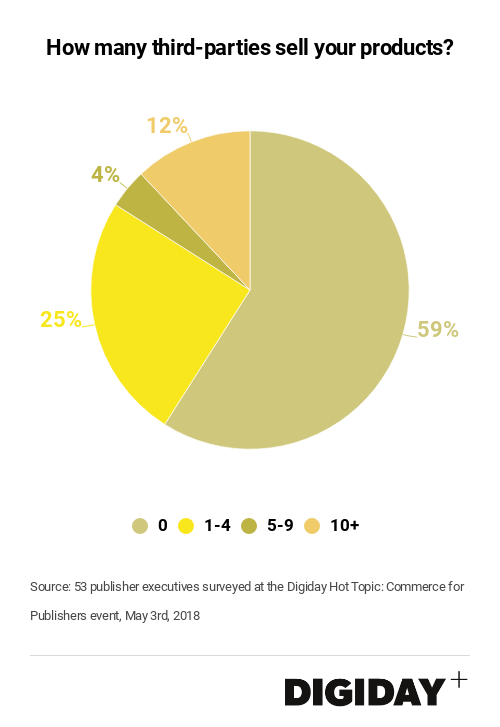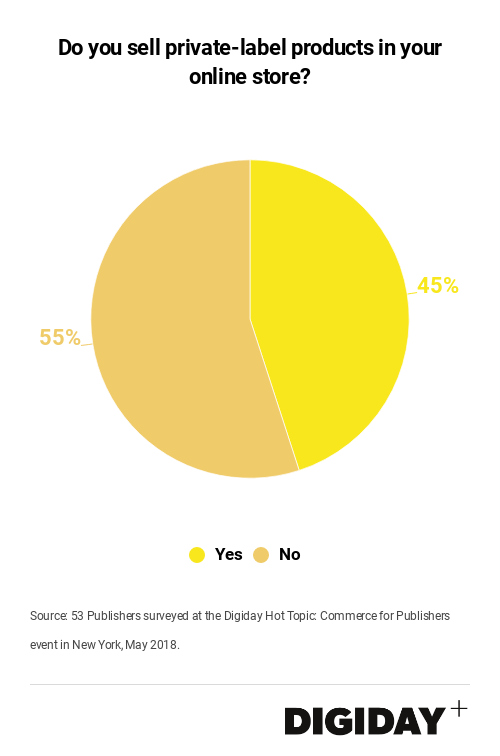Register by Jan 13 to save on passes and connect with marketers from Uber, Bose and more
Digiday Research: Publishers turn to retailers to sell their products

This research is based on unique data collected from our proprietary audience of publisher, agency, brand and tech insiders. It’s available to Digiday+ members. More from the series →
As publishers get more serious about generating commerce revenue, they’re looking beyond simply adding affiliate links to their pages. Many have taken steps to create their own online store through which to sell products, but increasingly publishers are selling their own products via third-parties too.
A survey of 53 publishers at the Digiday Hot Topic: Commerce for Publishers found that 41 percent of publishers now sell products via a third party, such as Amazon or other retailers.
Even for publishers with their own online stores, there’s a general consensus about the need for third-party partners. Seventy-six percent of publishers with owned online stores that were surveyed at the Digiday event said they also sell goods through other retailers.

Because Amazon already holds a dominating grip on many publishers’ e-commerce businesses, working with additional retailers could help ensure they avoid becoming dependent on a single platform. To that end, PopSugar which began selling branded products earlier this year is launching a new line of apparel with Kohl’s and Clique established an early relationship with Target.
Another step publishers can take to beef up their commerce strategies is to include private-label products in their own online stores. Forty-five percent of publishers with online stores surveyed by Digiday say they sell private-label products. BuzzFeed acquired rights to several private-label products to bolster the number of products it can sell online.
One advantage for publishers in retailing private-label products is that it can help them track consumer preferences and trends. There’s also lower risk for publishers because they don’t need to worry about developing products that won’t sell.

More in Media

Media Briefing: Here’s what media execs are prioritizing in 2026
Media executives enter 2026 weathered by disruption, but refocused on AI revenue, brand strength and video and creator opportunities.

Why publishers are building their own creator networks
Publishers are forming creator networks to regain control, combat traffic declines, and reach audiences shifting toward influencers.

The accidental guardian: How Cloudflare’s Matthew Prince became publishing’s unexpected defender
Cloudflare’s day job is fending off botnets and nation-state cyberattacks, not debating how Google and other AI firms crawl publisher sites.





